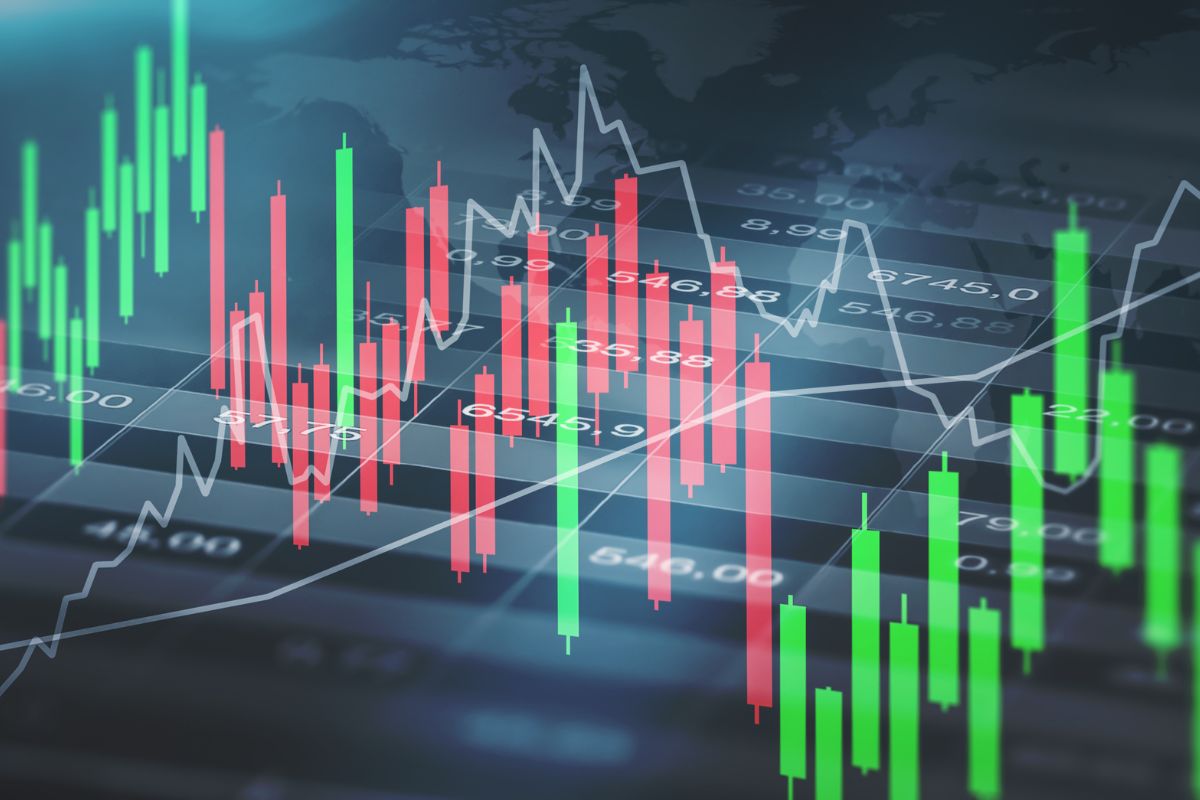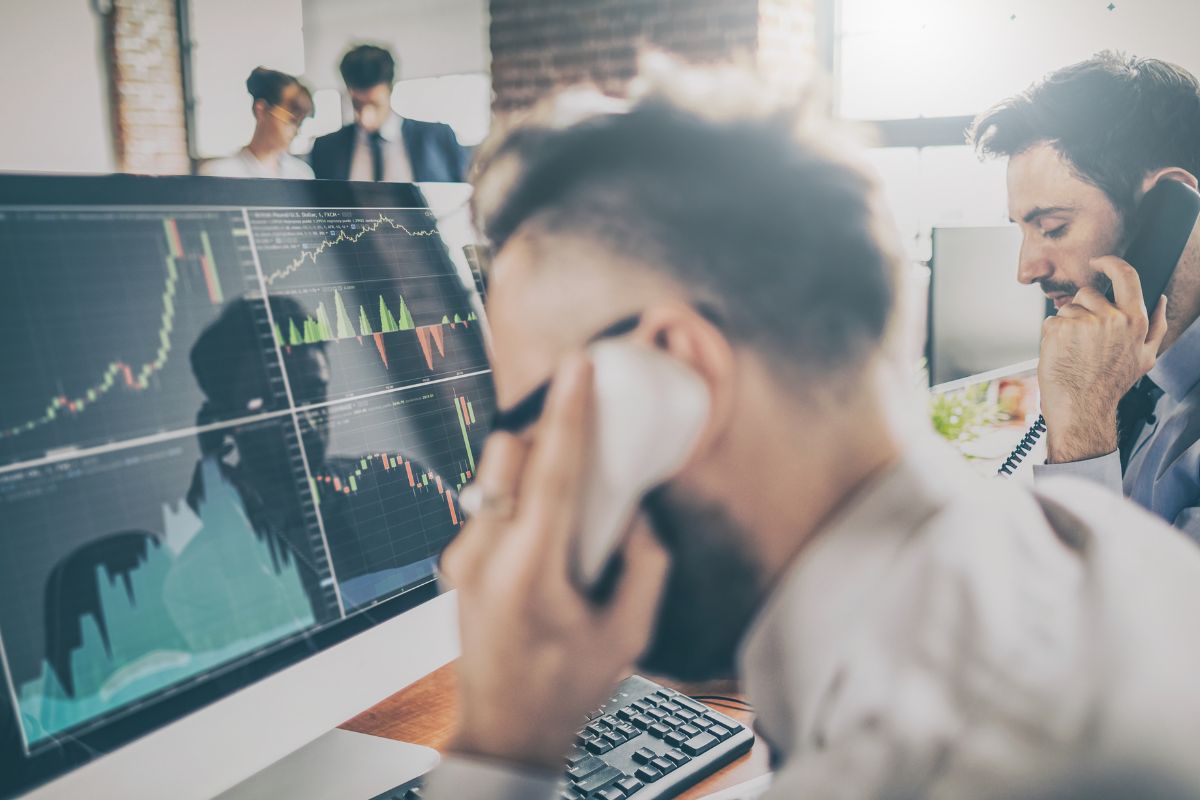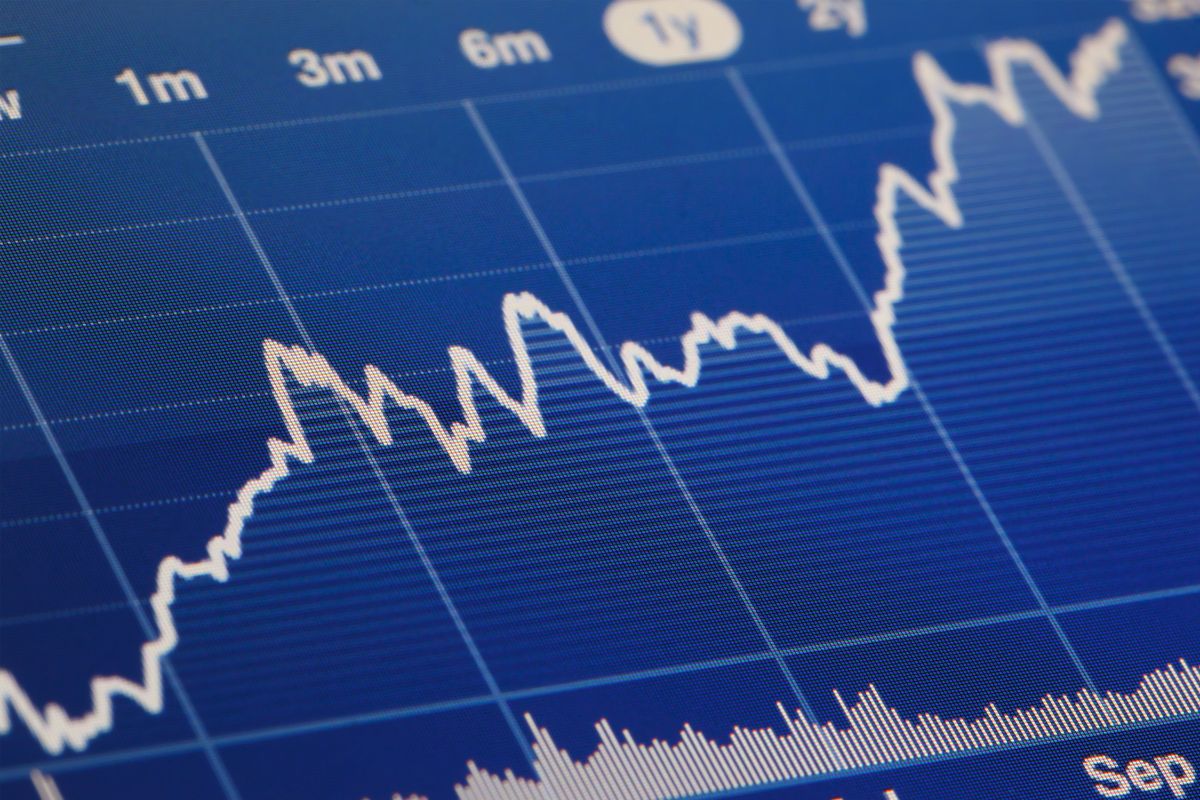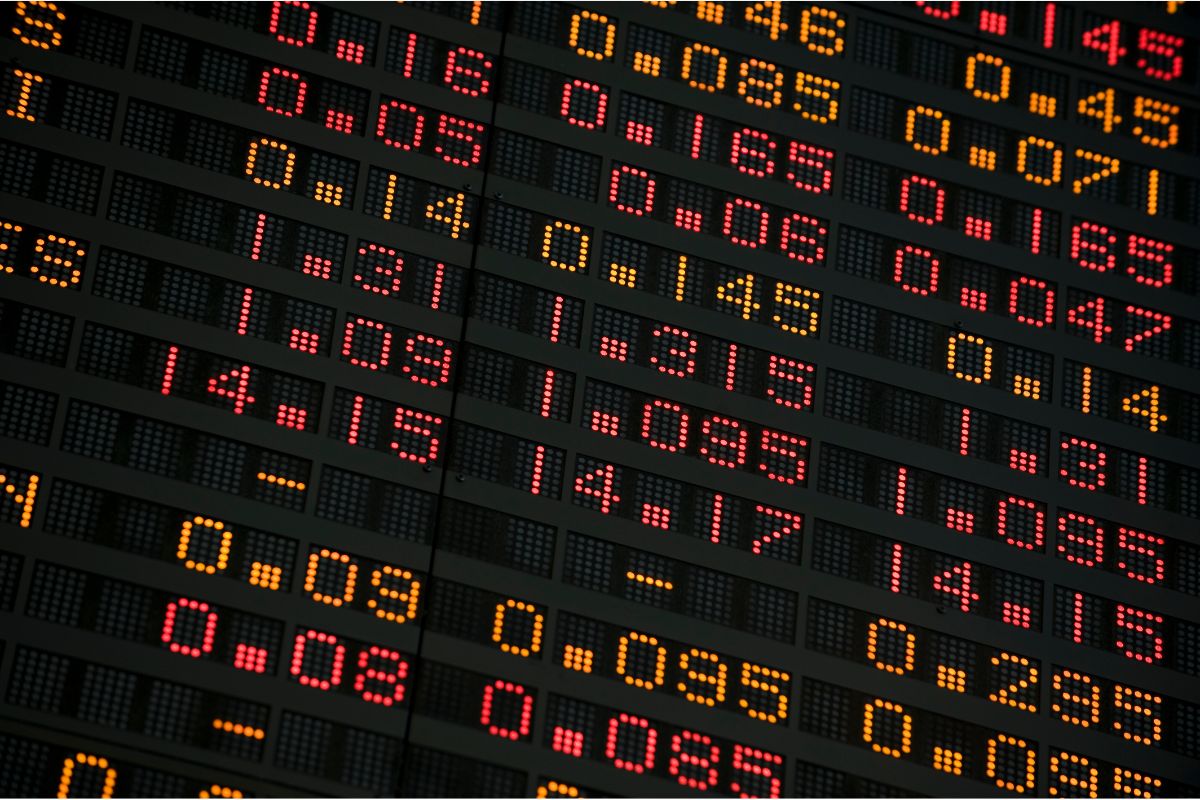After a 7% increase over the previous year, the Consumer Price Index in the United States achieved a new all-time high in 2021, surpassing its previous record level.

The rate of inflation is rising at a rapid pace, which has a substantial impact on the purchasing power of money due to the fact that one dollar does not go as far as it used to.
The stance that the central bank has taken with regard to its monetary policy has been a significant contributor.
The Federal Reserve Board has maintained low-interest rates while printing a substantial quantity of money, which has led to a devaluation of fiat currency as a means of keeping the economy afloat during the COVID-19 epidemic. This has resulted in a depreciation of the value of the fiat currency.
An increasing number of investors are seeking different ways to protect themselves against the persistent rise of inflation.
You can accomplish this goal in a number of ways, one of which is by making investments in precious metals; the method that is most straightforward is to invest in exchange-traded funds (ETFs) that are concentrated on precious metals.
A closer look is taken here at some of the most successful exchange-traded funds (ETFs) for precious metals.
iShares Silver Trust
iShares Silver Trust has the most silver. Natural silver bars are stored in safe deposit boxes. Investors can benefit from rising silver prices with fewer hassles and risks than buying silver stocks or coins.
The ETF has high liquidity and a 0.5% expense ratio. The fee can be worth it even though the fund has historically underperformed silver.
Silver stocks may underperform due to a variety of factors; the ETF lets investors match the price of silver.
Aberdeen Standard Physical Platinum Shares ETF
Aberdeen Standard Physical Platinum Shares ETF lets investors invest in platinum, a precious metal used to make auto catalytic converters.
The ETF owns bank-vault-stored bars. Platinum ETFs are a rare way to invest. Platinum jewellery and bars are available to investors, but there aren’t many publicly traded platinum mining companies.
Those who do mine platinum alongside other metals, reducing investor exposure to platinum prices. This lowers the fund’s expense ratio to 0.6%.
Aberdeen Standard Physical Precious Metals Basket Shares ETF
Aberdeen Standard Physical Precious Metals Basket Shares ETF exposes investors to several precious metals.
The ETF holds gold, silver, platinum, and palladium. Bank vaults hold precious metal bars.
The fund’s net assets were 57% gold, 26% silver, 12% palladium, and 4% platinum as of late 2021.
The ETF’s 0.6% expense ratio provides broad exposure to a basket of precious metals. It’s one of the few investments that diversifies investors’ exposure to precious metals.
Aberdeen Standard Physical Palladium Shares ETF
The Aberdeen Standard Physical Palladium Shares ETF allows investors to directly invest in palladium.
Like platinum, the primary use of palladium is for catalytic converters in cars.
Palladium’s other uses include jewelry, some dental fillings, and crowns. Like the other ETFs on this list, this one holds the precious metal in bank vaults.
The ETF is one of the few ways to invest directly in palladium. Few mining companies focus on producing palladium.
It’s not as prevalent in jewelry as other precious metals, making the ETF’s 0.6% expense ratio a reasonable cost to gain exposure to this particular precious metal.
What Are ETFs?
Exchange-traded funds are one of the most effective and beneficial financial products that have been developed in recent years for individual investors.
ETFs provide investors with many advantages, and they can be an excellent tool for achieving their investment objectives if they are used in a strategic manner.
An exchange-traded fund, or ETF for short, is a basket of securities that you can buy or sell through a brokerage firm on a stock exchange.
ETFs are offered for virtually every asset class that one could possibly think of, ranging from conventional investments to so-called alternative assets such as commodities or currencies.
In addition, investors are able to gain leverage, short the market, and avoid paying taxes on short-term capital gains when using the innovative structures offered by ETFs.
After a few false starts, exchange-traded funds (ETFs) got off to a serious start in 1993 with the product that is commonly known by its ticker symbol, “Spiders,” which went on to become the ETF with the highest volume in the history of the market.
It is projected that exchange-traded funds (ETFs) will be worth 6.64 trillion dollars in 2022, and there will be nearly 3,000 ETF products traded on US stock exchanges.
A brief introduction to exchange-traded funds (ETFs) is in order for investors who are not yet familiar with these instruments.
ETFs are very similar to mutual funds, but there are a few key distinctions between the two.
ETFs are similar to mutual funds in that they invest in a diverse variety of securities and provide shareholders with automatic diversification, Investors participate in exchange-traded funds (ETFs) rather than acquiring shares of individual companies, and as a result, they are entitled to a proportional percentage of the ETF’s overall value.
ETFs, on the other hand, are exchanged freely on the market, just like stocks and bonds, in contrast to mutual funds.
ETF shareholders have the ability to buy and sell shares of an ETF at any time, fully at their own discretion, in contrast to mutual fund shareholders, who can only redeem their shares by directly contacting the fund.
ETFs have been a common form of investment in recent years due to their low overall costs and streamlined transaction processes.
In addition, they have lower fees than other kinds of investments, they offer a high level of transparency, and they are more tax-efficient than mutual funds that are similar in nature.
How Do ETFs Work?

When stock exchanges are open for business, an exchange-traded fund, also known as an ETF, can be bought and sold in the exact same way that a company’s stock can be. This occurs during the trading day.
An exchange-traded fund, which is also known as an ETF, is comparable to a stock in that it has a ticker symbol, and it is not difficult to collect intraday price data when the market is open for trading. In addition, an ETF is also known as an exchange-traded fund.
In contrast to the situation with company stock, the total number of shares that are “outstanding” in an ETF can change on a daily basis due to the ongoing issuance of new shares and the purchase of previously held shares.
This is caused by the combination of both of these factors.
Exchange-traded funds (ETFs) are able to keep their market prices in line with the costs of the securities that they track by issuing and redeeming shares on an ongoing basis.
This helps to ensure that the market value of ETFs remains stable.
Despite the fact that the ETF was designed with individual investors in mind, the primary mechanism through which institutional investors contribute significantly to the ETF’s ability to track its underlying securities and maintain its liquidity is the purchase and sale of creation units.
Creation units are large blocks of ETF shares that can be exchanged for baskets of the underlying securities.
Institutions make use of the arbitrage mechanism afforded by creation units in order to bring the price of the ETF back into alignment with the value of the underlying asset when the cost of the ETF deviates from the value of the underlying asset.
Investing Atrategies
You can acquire access to practically every market in the world or any industrial area by utilizing exchange-traded funds, which are also known as ETFs.
Once you have defined what it is that you want to accomplish with your investments, you can use exchange-traded funds.
You have the choice of making your investments in a conventional fashion by putting your money into exchange-traded funds (ETFs) that follow the performance of stock indexes or bond markets.
You also have the flexibility to change the allocation of your investments to reflect changes in both your level of comfort with risk and the goals you have set for yourself.
You have the option of diversifying your portfolio by including alternative assets in it, such as gold, commodities, or emerging stock markets.
If you choose to do this, you should keep in mind the benefits and risks associated with each asset.
You have the ability to quickly enter and exit markets in the same manner that a hedge fund would, with the intention of making a profit from fluctuations that only last for a limited amount of time.
To get straight to the point, exchange-traded funds give you the freedom to be any investor you want to be.
This is the most crucial benefit of these funds. This is the most significant advantage that can be obtained from making these investments.
Underlying Fluctuations And Risks
Similar to mutual funds, exchange-traded funds (ETFs) are frequently praised for the diversification opportunities they present to investors.
It is vital, however, to keep in mind that the mere fact that an exchange-traded fund (ETF) has more than one underlying position does not indicate that it is immune to market volatility.
The breadth of the fund will largely determine the likelihood of significant swings (see also ‘How To Find Stocks For Swing Trading‘) in its value. An exchange-traded fund (ETF) that follows a broad market index such as the S&P 500 is expected to be less volatile than an ETF that tracks a specific industry or sector, such as an oil services ETF.
This is because broad market indices tend to be more representative of overall market conditions.
Because of this, it is pretty essential to be aware of the emphasis of the fund as well as the many kinds of investments that are included in it.
This matter is of much more concern now that exchange-traded funds (ETFs) have proceeded to become more specialized while, at the same time, the business has gotten more established and widespread.
When it comes to international or global ETFs, it is imperative to take into consideration not only the economic fundamentals of the nation being tracked by the ETF but also the creditworthiness of the nation’s native currency.
Any exchange-traded fund (ETF) that makes investments in a particular country or territory will face significant challenges if that nation or region is beset by economic and social unrest.
When making judgments on the profitability of an ETF, these considerations absolutely need to be front and center.
The golden rule in this scenario is to comprehend not just what the ETF is tracking but also the underlying risks that are associated with it.
Don’t let the fact that some exchange-traded funds (ETFs) have low volatility fool you into thinking that all ETFs are the same.
The tracking error of an index ETF is a measurement that determines how closely it follows its benchmark index.
Those with more severe tracking faults could potentially come with additional concealed dangers.
Low Liquidity

Liquidity is an essential consideration in the trading of exchange-traded funds (ETFs), stocks, and anything else that is traded publicly.
When anything has a sufficient trading interest, it is said to have adequate liquidity.
This indicates that if you acquire it, you will be able to sell it reasonably fast without causing the price to change.
Depending on the size of your stake in relation to the typical trading volume, getting out of an investment that is held in an ETF that is thinly traded may be difficult if the ETF in question is thinly traded.
Large spreads between the bid and the asking price are the single most telling indicator of an illiquid investment.
Examining the spreads and the movements of the market over the course of a week or month is the most effective way to determine whether or not an exchange-traded fund (ETF) is liquid before investing money in it.
The general rule to follow in this regard is to verify that the exchange-traded fund (ETF) in which you have an interest does not have a significant gap between its bid and ask prices.
When spreads are narrower, there is more liquidity in the market, which means there is less risk involved when entering and exiting deals.
Capital Gains Distributions
An exchange-traded fund (ETF) may, on occasion, disburse capital gains to its shareholders.
The fact that shareholders are responsible for paying the capital gains tax means that this outcome is not necessarily beneficial for ETF holders.
Instead of dispersing the capital gains and thus establishing a tax obligation for the investor, it is typically preferable for the fund to keep the money and invest it rather than distribute it and create the liability.
In most cases, investors will wish to reinvest the capital gain distributions they get.
However, in order to do so, they will need to return to their brokers in order to buy further shares, which will result in the creation of new fees.
Because different ETFs handle distributions of capital gains in a variety of ways, it can be difficult for investors to keep abreast of the funds in which they participate while still maximizing their returns.
Before making an investment in a particular fund, it is essential for a potential investor to get knowledge of the manner in which the fund handles distributions of capital gains.
Lump Sum vs. Dollar-Cost Averaging
When someone invests a lump sum, they are able to immediately put the entirety of your investment to work for them.
This is a fantastic strategy to employ in an up-trending market, but it might not be the best choice if the market appears to be topping out or if it is incredibly volatile.
When you use dollar-cost averaging, you invest $5,000 or $10,000, the same amount each month over the course of several years.
If the market is going down or is turbulent, this technique will work very well for you.
On the other hand, you can miss out on some potential rewards if you invest a portion of your money while the market is rising and the market is performing well.
If your brokerage does charge commissions, even low commission rates could end up costing you a large amount of money after multiple buy orders have been executed.
Leveraged ETFs
People who are interested in making investments frequently decide to put their money into exchange-traded funds (ETFs) rather than other forms of investments because they consider ETFs to be a more secure choice in general.
Even though we have already covered the issues that are linked with volatility, it is essential to be aware that certain types of exchange-traded funds (ETFs) are investments that carry a significantly higher level of risk in comparison to others.
Leveraged exchange-traded funds are one example that comes to mind (ETFs).
The fact that the prices of these ETFs are reset on a daily basis makes it quite likely that their value will decline over the course of time.
Even if the underlying index is performing very well, it is not impossible for this to take place.
When it comes to investing, many specialists in the financial sector advise clients to steer clear of acquiring leveraged ETFs under any circumstances.
Those investors who do want to adopt this technique need to keep a close eye on their holdings and be aware of the potential drawbacks of the strategy.
Inverse exchange-traded funds (ETFs) are a type of exchange-traded fund (ETF) that moves in the opposite direction of their reference or benchmark.
The name comes from the fact that they move in the opposite direction. It is feasible for leveraged inverse exchange-traded funds to produce returns that are two or three times as unfavorable as the benchmark.
Because of how they are built, the value of inverse exchange-traded funds (ETFs) typically decreases over the course of time.
ETFs vs. ETNs

Exchange-traded funds (also known as ETFs) and exchange-traded notes (also known as ETNs) are sometimes confused with one another due to the fact that their presentations are so aesthetically similar.
Investors, however, need to keep in mind that the two distinct types of investment vehicles that are available to them could not be more unlike one another.
ETNs can, among other things, follow an underlying index of commodities or equities, have a defined strategy, and incorporate fees in their structure.
ETNs can also contain costs. Additionally, they have the ability to track an index of equities or commodities.
However, the risks that are connected with ETNs are often slightly different from the risks that are associated with ETFs.
ETNs are vulnerable to the risk of the entity that issues them going out of business and becoming insolvent.
Investors are often out of luck if the bank that issues an ETN defaults on its obligations or, even worse, files for bankruptcy.
In either of these scenarios, investors lose all of their money. Investors who are eager to get on the ETF bandwagon may not be aware of this risk, which is distinct from the hazards that are tied to ETFs and can only be incurred by investing in ETFs.
Reduced Taxable Income Flexibility
An investor who acquires shares in a pool that is comprised of a range of individual stocks has more freedom than one who purchases the same set of equities through an exchange-traded fund (ETF).
This is because the ETF holds all of the stocks in the pool. This makes it more difficult for the ETF investor to control tax-loss harvesting, which is only one of the ways in which this situation is unfavorable for the ETF investor.
An investor may be able to sell their shares of a company’s stock at a loss if the price of the stock falls.
This will have the effect of diminishing their overall capital gains and will also have some degree of an impact on the amount of their income that is taxable.
Investors who own the same stock through an exchange-traded fund (ETF), on the other hand, do not enjoy the same level of luxury.
The ETF is in charge of determining when its portfolio will be updated, and in order for the investor to maintain their current position, they will need to purchase or sell entire lots of securities rather than trading individual names.
ETF Premium (or Discount) To Underlying Value
The price of an exchange-traded fund (ETF), like the price of a stock, may not always match the value of the underlying asset that the ETF invests in.
Because of this, it’s possible for an investor to find themselves in a situation in which they have to pay a premium on top of the price of the stocks or commodities that are included in the portfolio of an ETF in order to be able to purchase that ETF.
This can happen if the ETF is particularly popular or in high demand.
The cost of the underlying assets is increased by this amount, which is known as the premium.
The possibility of being exposed to this scenario exists whenever one buys or sells an exchange-traded fund (ETF), despite the fact that it occurs pretty infrequently and typically resolves itself over the course of some amount of time.
Examine the disparity between the current market price of an ETF and its net asset value in order to identify any potential anomalies (NAV).
If the price at which it is trading in the market is consistently different from its NAV, there may be something fishy going on. NAV stands for net asset value.
Issues Of Control

Exchange-traded funds, often known as ETFs, are becoming increasingly popular among investors.
Nevertheless, this trend is also contributing to one of the industry’s vulnerabilities.
An exchange-traded fund’s underlying index is made up of a variety of individual stocks, and investors often do not have any influence over which supplies are included in the index (ETF).
An investor who is interested in avoiding a particular company or industry due to a reason such as a conflict of morals does not have the same amount of control as an investor who is focused on individual equities due to the fact that this is the case.
It is not necessary for an investor in an exchange-traded fund (ETF) to take the time to choose the individual equities that will be included in the portfolio.
On the other hand, a shareholder can not remove individual stocks from their portfolio without also liquidating their holdings in the ETF as a whole.
Pros Of ETFs
Diversification
One of the most important aims of any effective asset allocation plan is diversity, which means investing in a wide range of companies within each asset class as well as a variety of different asset classes themselves.
ETFs have the potential to provide the highest level of diversification possible by giving investors access to a diverse range of underlying assets (as opposed to holding individual stocks).
Trading Like Stocks
During the day, investors can buy and sell exchange-traded funds (ETFs) just like they would individual shares of stock while the stock market is open.
Orders for mutual funds have to be placed before the market closes (or earlier in the day for some funds), and the actual purchase or selling of the funds can only take place after the market has been closed for the day.
Cheap To Own
Owning an ETF can often be done at a meager cost. This is notably the case with a number of index exchange-traded funds (ETFs), including the following: Because of this, investing in low-cost ETFs can be a good choice for long-term investors and an excellent vehicle for investing throughout retirement.
Your long-term success as an investor will be heavily influenced by the fees and expenses you incur, and low-cost ETFs may play a role in this.
PLEASE BE AWARE THAT NOT ALL ETFs have meager fees. You will need to do a study into this and other characteristics of any ETF that you are possibly taking into consideration before making a decision.
Before you invest in any exchange-traded fund (ETF), the Financial Industry Regulatory Authority (FINRA) recommends that you thoroughly study all of the information that is available about the ETF, including its prospectus.
Low Minimum To Invest
The minimum initial investment required to participate in a mutual fund, including index funds, is typically in the region of four to five figures.
Those of us who are just beginning to invest or who do not wish to invest up to that somewhat large minimum would usually be out of luck.
At this time, the minimum investment required is only one share. You could even be able to buy a portion of a percentage when you first get started if you work with specific brokerage companies.
They Can Go Beyond the Stock Indexes
A measure of the level of activity The types of exchange-traded funds (ETFs) that track benchmarks such as the S&P 500, the Russell 1000 and 2000 indexes, the Barclays Aggregate Bond Index, and other widely followed stock and bond indexes are perhaps the most common types of ETFs.
Other widely followed stocks and bond indexes include the Dow Jones Industrial Average and the NASDAQ Composite Index.
However, as a result of increased interest in exchange-traded funds (ETFs) among both individual investors and institutional investors, the number of different ETF kinds has increased.
There are now exchange-traded funds that: In recent years, one of the sectors that have seen an expansion in ETFs is that of smart beta (see also ‘What Is Alpha And Beta In Stocks?‘) ETFs.
To put it simply, they are exchange-traded funds (ETFs) that begin with an index but then specialize in a particular investment objective or category of companies.
The following are examples of common types of smart beta ETFs: You will have a better chance of finding an exchange-traded fund (ETF) that meets your specific requirements for investment, thanks to the expanding number of ETF types.
The diversity of exchange-traded funds (ETFs) can be a benefit, but it can also be a drawback because it can lead to confusion, and some of the genuine advantages of ETFs, such as an easy and low-cost option to own the entire market, may be diminished as a result.
Always do your research and understand what you are putting your money into, as well as any fees that are associated with the investment.
Liquidity

The capacity to quickly swap an asset at or very close to its current market value is what is meant by the term “liquidity.”
There are ETFs that have a high level of liquidity. Some people do not.
ETFs that have a high daily trading volume and that track main indexes such as the S&P 500 will not have a problem with liquidity because these ETFs monitor these popular indices.
You will likely be able to sell the investment whenever you choose to do so. ETFs that invest in asset classes such as bonds may not be as liquid as those that support other asset classes.
It may be more challenging to sell ETFs exactly when you want to for certain asset classes, including bonds and other asset classes such as commodities, real estate, and some foreign securities.
Regulatory Structures
According to FINRA, “the vast majority of exchange-traded funds are registered with the Securities and Exchange Commission (SEC) as investment firms under the Investment Company Act of 1940,” and the shares that these funds issue to the general public are registered as securities under the Securities Act of 1933.
Even though the Securities Act mandates that publicly traded corporations must register their shares before offering them for sale to the general public, many exchange-traded funds (ETFs) that invest in commodities, currencies, or securities based on commodities or currencies are not registered investment companies.
These ETFs can buy securities that are based on commodities or currencies. Before you buy something, you should always make sure you have a complete understanding of what it is you are acquiring and how it is governed.
Cons
You Need To Be Aware Of What You Are Buying
Because there are now so many different kinds of exchange-traded funds (ETFs), it is essential that you are informed of what you are investing in.
The Securities and Exchange Commission (SEC) suggests that “some exchange-traded funds can be relatively easy to understand.
If other exchange-traded funds (ETFs) use complex investment techniques or have different investment goals, it may be more difficult for investors to understand those other ETFs and incorporate those ETFs into their investment portfolios.
“Leveraged ETFs,” for example, has the objective of achieving a performance that is equivalent to a multiple of an index’s performance after taking into account all fees and other associated costs.
Since the aim of these exchange-traded funds, also known as ETFs, is to reach their investing goal on a daily basis, it’s probable that individuals who are looking to invest for the long term shouldn’t utilize them.
The Securities and Exchange Commission (SEC) advises, “Certain ETFs can be relatively easy to understand.”
Other ETFs may have unusual investment objectives or use complex investment strategies that may be more difficult to understand and fit into an investor’s investment portfolio.
For example, “leveraged ETFs” seek to achieve performance equal to a multiple of an index after fees and expenses.
These ETFs seek to achieve their investment objective on a daily basis only, potentially making them unsuitable for long-term investors.”
Bid-Ask Spreads
Without getting too technical, bid-ask spreads arise when a seller is willing to part ways with their goods for a lower price than what a buyer is willing to pay for them. This can be a positive or bad thing.
This takes place whenever equities are bought and sold on a stock exchange. Let’s imagine that you are willing to pay $10 for the stock XYZ, but someone else is only prepared to sell it to you for $8.
Let’s also pretend that you are the buyer. Your broker will go to the vendor and buy XYZ for $8 from them, then come to you and sell it to you for the price you provided of $10, keeping the difference of $2 for themselves.
Both equities and exchange-traded funds (ETFs) are susceptible to this phenomenon.
However, bid-ask spreads are much more muted with mutual funds than they are with stocks and ETFs.
This is due to the fact that the mutual funds are only settled once a day, as opposed to continuing throughout the day like stocks and ETFs.
Intra-Day Peaks
As is the case with stocks, you run the risk of purchasing an exchange-traded fund (ETF) at precisely the wrong time when the value suddenly skyrockets for one minute.
Or, if you want to sell, you run the risk of doing so at exactly the wrong time if the price falls while you are selling.
Because mutual funds are settled once a day, they are not affected by intra-day peaks even if there may be actions you may take to lessen the likelihood of this happening.
Your Money Is Not Safe from Market Losses
Even if exchange-traded funds (ETFs) are dedicated to bonds and other relatively safe Some exchange-traded funds (ETFs), although not all of them, will hand out capital gains to shareholders.
This may result in an unwelcome financial obligation in the form of taxes on capital gains. It is best to practice selecting an exchange-traded fund (ETF) that reinvests capital gains whenever possible.
Make sure you are aware of the manner in which your ETF handles capital gains, and prepare yourself accordingly.
assets, the vast majority of ETFs are still, at their core, nothing more than well-diversified investments in the stock market, which is not risk-free.
Be warned that if you possess an exchange-traded fund (ETF) that tracks the Standard & Poor’s 500 and the market as a whole crash (see also ‘What Happens To Gold When Stocks Crash?‘), your ETF will also crash because it is tied to the market.
Watch Out for Trading Commissions
It is dependent on your brokerage, but you will likely be required to pay a trading fee if you purchase or sell an exchange-traded fund (ETF).
This is not a significant concern for investors who want to buy and hold the security, but it should be considered. If you are actively trading ETFs, you should pay careful attention to the commissions.
Conclusion
That concludes today’s extensive post on ETFs and a few of the top selections available.
As we have discovered, ETFs, like most trading choices, have risks and benefits.
However, once you have a clear concept and approach in mind, you will be off to a wonderful start. Always conduct your own research and invest only money that you can afford to lose.
- Dividend Growth Investing for Millennials - February 27, 2025
- The Ultimate Guide to Investing in Precious Metals Today - December 6, 2024
- Essential Cryptocurrency Trends: What You Need to Know - December 6, 2024

